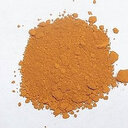Evaluation of the antibacterial activity of selected Pakistani honeys against multi-drug resistant Salmonella typhi.
Fjalë kyçe
Abstrakt
BACKGROUND
The development of resistance to conventional anti-typhoid drugs and the recent emergence of fluoroquinolone resistance have made it very difficult and expensive to treat typhoid fever. As the therapeutic strategies become even more limited, it is imperative to investigate non-conventional modalities. In this context, honey is a potential candidate for combating antimicrobial resistance because it contains a broad repertoire of antibacterial compounds which act synergistically at multiple sites, thus making it less likely that the bacteria will become resistant. The in vitro antibacterial activity of 100 unifloral honey samples against a blood culture isolate of multi-drug resistant (MDR) Salmonella typhi were investigated.
METHODS
All honey samples were evaluated for both total (acidity, osmolarity, hydrogen peroxide and non-peroxide activity) and plant derived non-peroxide antibacterial activity by agar well diffusion assay at 50% and 25% dilution in sterile distilled water and 25% in catalase solution. Manuka (Unique Manuka Factor-21) honey was used for comparison. The phenol equivalence of each honey sample from 2% to 7% (w/v) phenol was obtained from regression analysis. The antibacterial potential of each honey sample was expressed as its equivalent phenol concentration. The honey samples which showed antibacterial activity equivalent to or greater than manuka honey were considered therapeutically active honeys.
RESULTS
Nineteen honey samples (19%) displayed higher hydrogen peroxide related antibacterial activity (16-20% phenol), which is more than that of manuka honey (21-UMF). A total of 30% of the honey samples demonstrated antibacterial activity between 11 and 15% phenol similar to that of manuka honey while 51% of the honey samples did not exhibit any zone of inhibition against MDR-S. typhi at 50% (w/v) dilution. None of the indigenous honey samples displayed non-peroxide antibacterial activity. Only manuka honey showed non-peroxide antibacterial activity at 25% dilution (w/v) in catalase solution.
CONCLUSIONS
The honey samples which displayed antibacterial activity equal to or greater than manuka honey may be useful in the clinical conditions where higher hydrogen peroxide related antibacterial activity is required. Manuka honey, which is known to possess non-peroxide antibacterial activity, warrants further evaluation in a suitable typhoid animal model.



